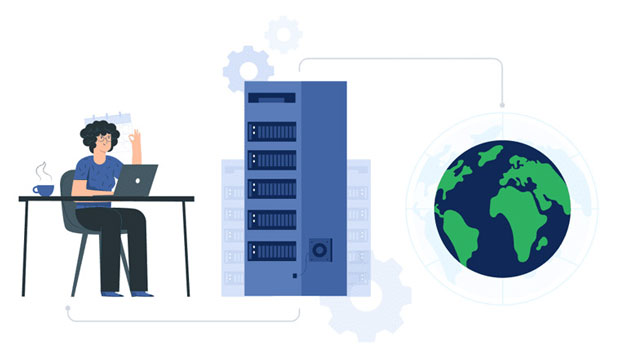In the ever-evolving digital landscape, online privacy and security have become crucial concerns for businesses and individuals alike. To address these challenges, proxy services play a vital role in enabling anonymous internet browsing and improving data security. PYPROXY Proxy Company offers businesses and individuals the opportunity to configure and use proxy accounts for enhanced privacy and better online performance. This guide will walk you through the process of registering and configuring an proxy account for pyproxy Proxy Company, explaining the steps in detail and providing key insights into making the most of this service. Step 1: Registering for a pyproxy Proxy proxy AccountTo begin using the pyproxy Proxy Company’s services, you must first register for an proxy account. Registration is the first step to gaining access to their proxy network, which will allow you to handle the proxy configurations and manage client requests. Here are the essential steps to complete the registration process:1. Visit the Registration Portal Start by visiting the pyproxy registration page. The registration process is typically straightforward and requires basic personal or business details. These include your name, contact information, and the type of proxy services you're interested in (e.g., residential proxies, datacenter proxies, etc.).2. Create a Secure Username and Password During the registration process, create a strong username and password combination. Security is a priority, so ensure that your password includes a mix of letters, numbers, and special characters.3. Verify Your Identity Depending on the proxy service provider's requirements, you may be asked to verify your identity. This could involve email verification or even a phone number confirmation to ensure the authenticity of your account.4. Agree to Terms and Conditions Before completing the registration, make sure to review and accept the terms and conditions of the service. It’s important to understand the usage policies, data protection protocols, and any limitations the service may have.Once you’ve registered successfully, you’ll be able to log in to your account and begin configuring your proxies.Step 2: Configuring Your Proxy Account for UsageOnce you’ve completed the registration process, the next critical step is to configure your proxy account to start using the proxies. This includes choosing the right proxy plan, setting up the proxy server, and integrating the service with your existing systems. Here’s how you can configure your account effectively:1. Choose the Right Proxy Plan Different businesses and users have varying needs for proxies. pyproxy typically offers different proxy packages based on bandwidth, IP addresses, or geographic location. Depending on your needs (e.g., handling large data requests, managing multiple IPs, etc.), choose the appropriate plan. If you are unsure which plan to choose, consider the following factors: - Number of proxies required - Location of the proxies (geographical preference can affect your browsing speed and security) - Bandwidth needs for handling large data requests or web scraping tasks2. Generate proxy ips Once you have selected your plan, the next step is to generate your proxy ips. The pyproxy system allows you to select the specific IPs that best meet your requirements. You may opt for rotating IPs or static IPs based on your operational needs. rotating proxies are ideal for tasks like web scraping, while static IPs are best for activities that require consistent online identity.3. Configure Proxy Settings After obtaining the proxy IPs, configure the proxy settings. This typically involves setting up the proxy server addresses, ports, and authentication details. Pyproxy typically provides user-friendly dashboards to input and save these settings. The configuration process will differ depending on whether you're configuring the proxy for a browser, software application, or server. Here are the common methods of integration: - For Browsers: Go to your browser's proxy settings, input the proxy ip address, port number, and your authentication details (username and password if required). - For Software/Applications: Many web scraping tools or business applications allow you to input proxy settings directly. Simply go to the settings or preferences section of the application, enter the proxy server details, and authenticate if needed. - For Server Configurations: When configuring proxies for servers, you’ll need to update the system's network settings to route requests through the pyproxy server. This may require administrative privileges and knowledge of networking protocols.4. Test Your Configuration After completing the configuration, it’s important to test your proxy setup to ensure it’s working as expected. You can do this by accessing websites or applications through the proxy server to confirm anonymity, speed, and location accuracy. Many proxy providers, including pyproxy, offer testing tools that allow you to verify if your proxy is correctly configured and operational.Step 3: Managing Your Proxy Account and UsageManaging your proxy account efficiently is key to maximizing the service’s potential. pyproxy provides a variety of tools and features to help you track and optimize your proxy usage. Here are some of the management features you should be familiar with:1. Monitor Usage and Analytics Most proxy providers, including pyproxy, offer detailed analytics dashboards where you can track your usage, bandwidth consumption, and the performance of your proxies. This is especially useful if you are running large-scale operations like web scraping or automation tasks. The analytics feature lets you see how much data you’ve consumed and how efficiently the proxies are performing.2. Add/Remove Proxies Over time, you may need to scale up or down your proxy network. Pyproxy allows you to add or remove proxies based on your changing requirements. This flexibility ensures that you only pay for what you need.3. Renew or Upgrade Your Plan If you find that your current plan is no longer sufficient, you can easily renew or upgrade your subscription. Pyproxy allows you to manage your plans directly through the user dashboard, ensuring that your service remains uninterrupted.4. Troubleshooting and Support In case you face any issues with your proxy setup or need assistance, pyproxy offers customer support. This support could include troubleshooting connection issues, optimizing performance, or answering questions about proxy management.Step 4: Best Practices for Proxy UsageTo ensure that your proxy setup remains effective and secure, consider the following best practices:1. Use Proxies Responsibly While proxies provide anonymity, it’s important to use them within the bounds of the law and respect ethical guidelines. Avoid engaging in activities such as spamming or data theft, which can result in penalties or account suspension.2. Maintain Security Protocols Always keep your account credentials and proxy settings secure. If your account is compromised, it could lead to unauthorized usage or data breaches.3. Monitor Performance Regularly Keep track of your proxy performance regularly. This allows you to quickly identify any slowdowns, connectivity issues, or unusual activity that may indicate a security risk.Setting up and configuring a pyproxy Proxy Company account involves several key steps, including registration, configuration, account management, and best practices for usage. By following this guide, you can ensure that your proxy setup is secure, efficient, and tailored to your needs. Whether you're protecting your online privacy or handling large-scale data scraping tasks, pyproxy provides a robust platform to meet your requirements. With the right configuration and ongoing management, you can optimize your online experience and achieve greater efficiency in your digital operations.
Oct 16, 2025


































































